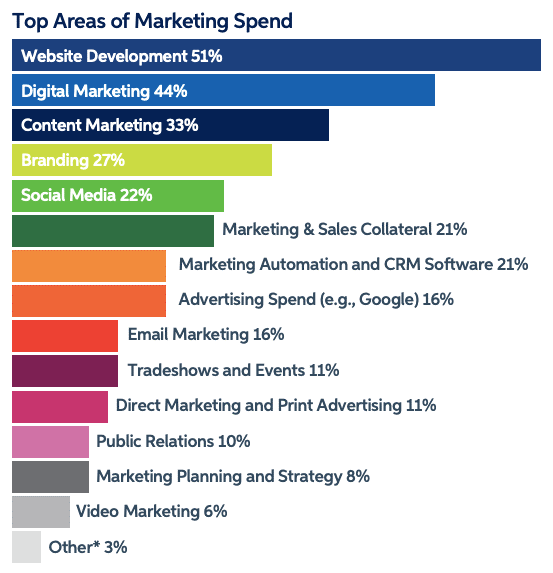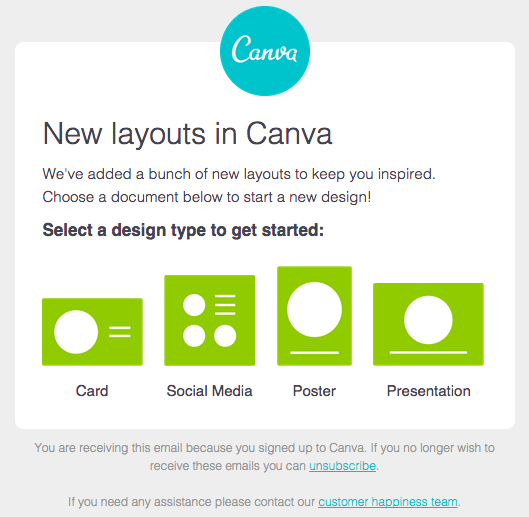With increasing competition, marketers are now relying on various channels to outreach different customers. Besides that, they are restructuring the old ones with some fine-tuned practices. Not only this practice is leading to better communication, but also resulting in excellent conversions.
Table of Contents
What is Direct Marketing?
Direct marketing includes almost all marketing forms, where there is direct communication between the buyers and sellers. It could be phone calls, emails, social media, flyers, postcards, coupons, promotional letters, mail, among others. The process passes on the information about the products, services to the target customer without third-party’s help such as the mass media, publications, and others.
The process might include communication with a large number of prospects, but when you add the brand’s name, address and other specific details, then it becomes a personalized campaign to outreach them.
How Direct Marketing Works?
Direct marketing works with one rule, i.e., to connect with customers directly. One can include sales pitches, messages, SMS campaigns, and others to increase customer engagement. The recipients are urged immediately to communicate on the toll-free number, or answer to the reply card and email.
The third-party such as the mass media and the publications are completely eliminated here, to get a direct response.
So, What is Direct Response Marketing?
Direct response marketing aims to evoke emotion among the customers for getting instant response. The goal is to generate leads and convert them rightly to increase ROI. Different channels can be used, such as TV, print, digital, email, and others.
Why is Direct Marketing Important?
The main goal of direct marketing is to push the customer to take the right action. For people, who want immediate results, this could significantly help.
The CTA is rightly placed, be it on the postcard, mail, coupons, or others to attract the customer’s attention. This isn’t easy if you promote the service or product via mass media.
Direct Marketing Facts:
66% of B2B executives would respond to a direct mail.
60% of catalog recipients visit the website of the company.
Check the below example, here you can see B2B organizations spend 11% of their marketing budget on direct marketing and print advertising. As compared to other marketing forms, it might look like a small allocation but still is considered a crucial one.

Image source: smartinsights.com
Features of Direct Marketing are:
1. Database Segmentation:
As a marketer, you would be having a good number of prospects in your database. The challenge here is dividing these prospects into precise groups. This can be executed based on the revenue, geography, employee size, and others.
What’s the point in sending any promotional mail to the customers who don’t fit into that particular criterion?
As per a statement by Meghan Keaney Anderson, VP Marketing, HubSpot:
Businesses get blinded by the allure of a large subscription list, but unengaged subscribers aren’t just not interested in what you are sending, they are actually harming your deliverability
In direct marketing, you need to carefully segment before proceeding to the next stage of the campaign.
2. Response Tracking:
If you don’t monitor the response, it becomes difficult to understand which strategies would work best for the organization. B2B organizations could directly connect with the prospect via chatbots, emails, and others. And through this, they can understand the likes, dislikes, preferences of the customer.
Direct Marketing Examples:
1. Canva:
The brand helps marketers create graphics, posters and other forms of visual content. The unique thing about the organization is whenever they design the new concepts, they inform it to their customers. They execute it by sending the email to their subscribers.
As you can see in the below example, the brand sent the new designs to the customers. It has segregated every design, be it for the card, presentation, and poster. This is to make things easy for the user

Image source: cyberclick.net
2. Toyota Corolla:
Toyota Corolla, the 5-seater Sedan brand, implemented a direct marketing strategy to reach a good number of customers. Their innovative direct marketing strategy struck the right chord with the customers.
Result:
- An increase of 257% in the website traffic
- 500,000 people were significantly impacted
- 900% increase in the test drive
- Almost 8000 in the waiting line
3. Google:
The brand utilizes direct marketing for many of its B2B products.
You can see the tag line in the below example, “your best new customers could be searching for you right now” This line is catchy as it means, if you have the best services, then the customers would also crave for your service. $75 in free advertising and the deadline offers statements attracted the customers to the brand.

Image source: postary.com
4. Intel:
The next in line is none other than Intel.
The brand maintains consistency, such as the content, designs, colors and others, for its envelope and postcard design. The idea of developing a simple message clicked right way in this campaign.

Image source: postary.com
Direct Marketing Strategies and Tools?
Some of the best used direct marketing strategies are:
1. Guerrilla Marketing:
Any out-of-the-box approach could hook the customers for a specific time span. This is what guerrilla marketing does. It thrives on the creativity, and the more innovative the thought process, the better.
Businesses try guerrilla marketing to shoot up their revenue. Mostly it includes the small-sized businesses competing against large businesses and want immediate attention.
The best way a B2B organization can execute guerrilla marketing is by spreading business cards. If a B2B organization has your business card, there are higher chances that they would like to communicate with you.
Another guerrilla marketing tactic is organizing an informal B2B event.
Yes, B2B events.
Brands should know that a well-designed postcard could fetch them more than a thousand prospects.
2. Developing the Best Postcards:
In the below example, you can see a great postcard design. It has the right colors, design and content as per the B2B market. The postcard also includes the necessary information such as the website address, phone number, email address, Call to Action, such as “Call today to schedule your services!”

Image source: kinsta.com
Brands should know that a well-designed postcard design could fetch them more than a thousand prospects.
The essential design tips that should be considered for developing the best postcards are:
- A nice image that aligns with the brand’s marketing message
- A bold statement reaching out to the prospects
- Contrasting colors so that your message is clearly highlighted
- Stating it precisely how the product would help the user instead of just stating the features
- Adding the right subheadings in the postcard
An attractive postcard design could make all the difference. It motivates the B2B customers to go for the service.
3. Lead Nurturing Programs:
The lead nurturing program in direct marketing should be seriously considered. As these are the customers to whom you would be connecting directly and have higher chances of conversions, you shouldn’t miss any opportunity to be in touch with them at all points. Also, you can look for the up-sell and cross-sell opportunities to hit the target market. With every opportunity, you can earn the right revenue.
Types of Direct Marketing:
1. SMS Marketing:
The promotional SMS could instantly land into the message box of the customer. With the global delivery of the short messaging service, brands could reap the best business results. Just as a personalized mailing service, this marketing can also be personalized.
2. The Messenger Marketing:
You must have used Facebook messenger. In messenger marketing to reach out to the customer directly. The chatbots here can collect the right orders, help users register for the event, and provide answers to simple queries.
3. Direct Mail Marketing:
It is the easiest and one of the most used marketing forms to reach out to customers at their postal address. This channel is acknowledged as the oldest technique which the baby boomers, now the C-level executives, are accustomed to. The channel includes printing, design, addressing, mailing list, and postage.
4. Web Push Marketing:
This type of marketing involves pushing the messages on the side screen of the computer or mobile screen on the website. It aims to make 1:1 communication with the customers without using the customer data.
5. Email marketing:
This marketing follows sending direct emails to customers. The promotional messages could be in the form of newsletters, transactional emails, or other business emails. This form is hugely liked by the prospective customers, and is considered a successful direct marketing campaign.
Other forms of Direct Marketing are:
- Direct Selling: It means posting the mail for the right promotion of the services, products. The process includes postcards, envelopes, and catalogs.
- Social Media: It helps in business growth. When you promote the product on this platform, you get the right feedback to further improvise it.
- Telemarketing: This involves reaching out to the customers over the phone and selling your product. You can also precisely follow-up with this method.
Direct Marketing Vs. Indirect Marketing:
Direct marketing involves the exact communication with the prospect on a 1:1 basis.
If you take the example of indirect marketing, then the process is executed randomly. Here the mails, telemarketing, and others are carried out on a broader level.
Thus, as direct marketing involves better communication approach, it tends to generate better results. Moreover, the results can be measured faster.
In indirect marketing, if your brand is not well-known and you promote your product or service on other platforms, then it takes time before the customer notices you. You need a lot of patience to have a wait and watch approach.
Direct Marketing Channels
- Door to door sales
- Telemarketing
- Targeting online ads
- Text messaging
How to Launch this Campaign?
You need to follow specific steps for launching this campaign and reaching out to potential customers. So, how do you start?
1. Developing the Contact List:
Before you move on to launch a direct marketing campaign, you should know your target contacts, based on demographics, geography, etc. A good contact list is not enough, you should have the customized list of the prospects who love your product or service.
2. Creating the Ideal Mail:
Your campaign should be entirely perfect. The text, colors, subject, and CTAs should be proper for the creativity to thrive.
3. Entering a Code:
Brands need to measure the results to understand whether the campaign is on the right path. As a marketer, this would improvise the approach.
For this, you have to enter the pixel code in the emails so that it can identify the user who visited the site via this campaign.
4. Testing the Campaign:
You can then execute the A/B testing to check which of the variants are working better, be it the content, subject line, colors, button, and others.
5. Sending a Test Mail:
After completing entire steps, you have to check whether it is the effective direct marketing. For that, you just need to send a test email and check the effectiveness.
6. Response:
Brands always wait for the right response rate for their mailers. But everyone doesn’t respond immediately. So, have patience and check how fast the target audience replies.
7. Analysing the Final Results:
The final results of the campaign is what matters.
Check how many people opened the email, clicked on the link and finally you got return on investment. Find out which of the versions has worked better for the campaign. By analysing the entire scenario, you can implement that version for your campaign.
Direct Marketing Tips and Best Practices:
- Personalizing and segmenting your marketing content based on demographics, geography, and other factors.
- Integrating various marketing techniques for good performance
- Writing effective CTAs both for the new customers also the loyal ones
- Updating the data
- Updating the content as per search engine
Some of the Commonly Asked Questions (Faqs):
1. What is direct marketing email?
These emails are the ones that include the marketing message of the products or services, and are sent to a huge list of contacts and that too directly. The process could help in good conversions
2. What are the three major forms of digital direct marketing?
The three major forms of digital direct marketing are web browser ads, email, and via mobile applications.
3. Which of the following best represents direct marketing?
a) Company promoting services on email
b) A lot of social media marketing to increase brand awareness
c) Posting content on Forbes
4. Which of the following statements is most accurate?
a) Direct mail marketing has become outdated with the introduction of email marketing
b) When you want the best response, email marketing is better than direct marketing.
c) Direct marketing eliminates third-party.
5. Which of the following is the fastest growing form of direct marketing?
a) Direct mail marketing
b) Digital Marketing
c) Catalog Marketing
d) Kiosk Marketing
6. Which of the following is a traditional direct marketing tool?
a) Online advertisement
b) Email
c) Catalog
d) Website
Benefits of Direct Marketing:
1. Making the Right Usage of Budget:
All the organizations seek techniques for the right usage of the budget to increase the customer base.
While the latest forms of marketing could help reach out to more customers, there are high chances it would exceed the allocated budget costs. This marketing is a traditional form that holds back extra costs, and helps reach the target on time. As an organization, you just know where your money is going!!!!
2. Accurate Targeting Process:
You need to put in the right effort and implement the best strategy for connecting with B2B customers. Whether you are a retailer, from the manufacturing industry, or others, this strategy matters a lot. But sometimes that extra care doesn’t work. The reason-you didn’t execute the accurate segmentation process!!!
Direct mail helps in reaching out to the right set of customers for desired business results.
3. Generating Great Business Opportunities:
Finding the right B2B customer is really a tough task. This channel form facilitates generating opportunities that help organizations reach the target.
4. Personalized Communication:
As this channel connects with customers directly, marketers can make a personalized communication with the customer.
5. Boosting Sales:
This is a top priority for organizations. Direct marketing attracts new customers as well as retain the old customers, thus boosting the sales.
Every organization maintains the customer records. With this information, they could craft the content, designs, and others to shoot out the mail.
6. Improving the Customer Relationship:
An effective customer relationship is what keeps your brand going. This form of marketing helps you draft the strategy to make one-to-one communication at the right time.
7. Measurable Performance:
In direct marketing, you could see the immediate results. Whether the campaign performed or not, the results would be out and clear. Thus, you could analyze and find tactics on how to improve the results in the next campaign.
Challenges of Direct Marketing:
The disadvantages of direct marketing are:
1. Offer:
You need to be extra sure, what offer needs to be given.
As this is one-to-one communication, customers would immediately trust your offer. So, if you don’t meet their expectations, it would disappoint them.
2. Creativity:
Brands should have a good creativity in their direct marketing campaign. As you have one chance to connect with the customer, the right creativity could only make you stand out.
3. Timing:
Know the right time. The direct marketing efforts only gives results when the customer is comfortable to read your message. Most of the direct marketing campaigns failed as it couldn’t connect with the customer at the convenient time.
4. Target Identification:
Many times, identifying the real target becomes difficult. In such cases, as a marketer, you need to be extra careful while sending individual mail to the customers.
The Marketing Objectives of B2B Organizations in 2021:
As the pandemic affects global businesses, it has become a tough task to maintain the growth momentum. In such a scenario, direct marketing helps in making an instant connection with the customers paving the path for better results. Remember adding only revenue generation landing pages would not make any difference. You have to get going with the best direct marketing practices along with display ads. This marketing method would surely bring measurable results.
According to Forbes, in the “Ten marketing predictions for 2021, “marketers would increasingly invest in the direct relationships with their customers. They don’t want to be squeezed by the middle men!!!!
Conclusion:
Direct marketing is now significantly used in all organizations. With the B2B marketing process getting elongated (almost 52% of respondents stating the number of decision-makers has increased significantly), direct marketing is helping organizations connect with the best customers at the right time and generate best results.
The blog here precisely discusses about the direct marketing strategies, and how organizations can use them in their marketing process to outreach a broader customer group in a short span.





